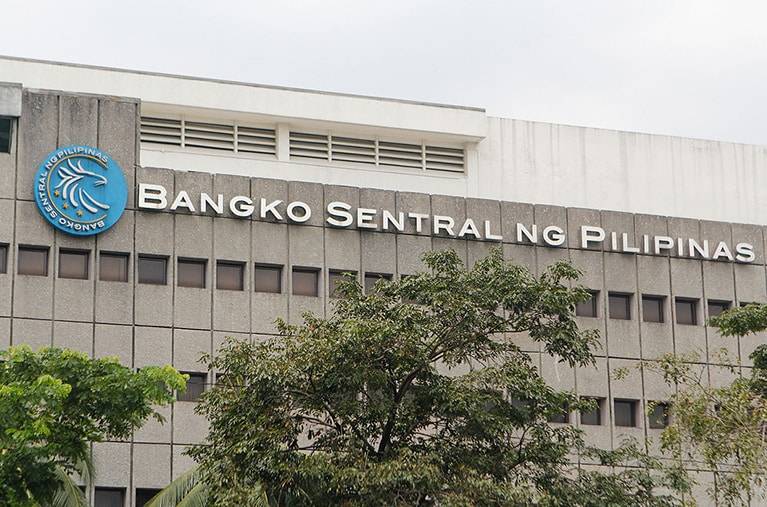RRR cut to free up over ₱300B in loanable funds

The decision of the Bangko Sentral ng Pilipinas (BSP) to lower the cash requirements of banks is expected to inject over P300 billion in additional money supply to the domestic economy, doubling down on easing as more interest rate cuts are likely on the table this year, Nomura said.
In a commentary, the Japanese investment bank said the jumbo reduction to the reserve requirement ratio (RRR) of banks is estimated to unleash around P310 to P330 billion in loanable funds to the financial system, a “substantial” injection that is equivalent to roughly 1.2 percent of the country’s gross domestic product (GDP) this year.
This is expected to eventually drive down rates for both short-term and long-term government securities.
Today, the Bureau of the Treasury (BTr) will auction off P20 billion in Treasury bills (T-bills) or P6.5 billion each in 91- and 182-day paper and P7 billion in 364-day debt paper.
Then on Tuesday, the government will offer P25 billion in reissued 20-year Treasury bonds (T-bonds) with a remaining life of 19 years and eight months.
For Rizal Commercial Banking Corp. chief economist Michael Ricafort, rates for T-bills may continue to decline as changes due to the reduction in banks’ RRR will increase the amount of local currency in the financial system, raising the supply and lowering the cost of borrowing.
Nomura said that while the RRR cut came “sooner than expected,” the move was “not entirely surprising” as it had been repeatedly telegraphed by BSP Governor Eli Remolona Jr., who hinted at big cuts to the reserve requirement this year and in 2025 to bring the level to 5 percent.
Commitment
“We also did not see any urgency for the adjustment based on limited signs of liquidity tightening,” Nomura said.
“We believe the move is just BSP getting back to its longer-term commitment to reduce the RRR to low single-digit levels which was previously targeted by 2023 but was delayed due to rising inflation risks,” it added.
The RRR refers to the certain amount of deposits that banks must set aside as standby funds, which do not generate returns because they cannot be used for lending activities. This is to ensure that lenders are able to meet their liabilities in case of sudden withdrawals.
In a statement last Friday, the BSP said the RRR for big banks and non-bank financial institutions will be trimmed by 250 basis points (bps) to 7 percent, while the RRR for digital banks will be trimmed by 200 bps to 4 percent.
The BSP will likewise shave the RRR for thrift banks by 100 bps to 1 percent. Meanwhile, the reserve requirement for rural and cooperative banks will be removed after their RRR was also slashed by one percentage point to zero.
Lower costs
The new ratios will take effect on the reserve week beginning on Oct. 25, 2024. Trimming the RRR would “lower intermediation costs and promote better pricing for financial services,” the central bank explained. After the announcement, banking stocks capped the previous week up by 2.25 percent, outperforming the main index and the rest of sectoral counters.
The triple R reduction would allow banks to deploy more cash for lending, which can help boost an economy that historically gets about 70 percent of its fuel on consumption. The last time that the BSP trimmed the RRR was in June last year, a decision that brought the reserve ratio of big banks to its current level of 9.5 percent.
The RRR reductions would complete Remolona’s plan to create easier liquidity conditions for the economy. Prior to this, the BSP trimmed its policy rate by 25 bps to 6.25 percent at the August meeting of the powerful Monetary Board (MB), with Remolona hinting at one more cut of the same size either at the October or December meeting of the MB.
Moving forward, Nomura said easing inflation and the availability of tools to mop up any excess liquidity would allow the BSP to further relax financial conditions. At the same time, the start of the cutting cycle in the United States would also give the BSP more confidence to lower borrowing costs, it added.
”The BSP tends to see RRR cuts as operational shifts and was hence made separately from scheduled monetary board meetings to signal this does not represent a change in monetary policy,” Nomura said.
”So we still forecast BSP to cut by 25 bps at each of the October and December meetings, and by 75 bps in the first three meetings in 2025, bringing the policy rate to 5 percent by May 2025,” it added.
Meanwhile, this week is projected to see a decline in rates for both short-term and long-term government securities, influenced by a range of catalysts such as the start of the easing cycle in the US and the adjustment to the RRR.
The Bureau of the Treasury (BTr) will auction off P20 billion in Treasury bills (T-bills) on Monday or P6.5 billion each in 91- and 182-day paper and P7 billion in 364-day debt paper.
On Tuesday, the government will offer P25 billion in reissued 20-year Treasury bonds (T-bonds) with a remaining life of 19 years and eight months.
“The Fed’s 50-basis-points (bps) rate cut, coupled with Finance Secretary Ralph Recto’s dovish comments—hinting at his support for a 50-bps reduction in the upcoming October Monetary Board meeting—reinforced a favorable sentiment for bonds,” a bond trader told Inquirer.
The Fed started its much-anticipated easing cycle last week with a 50-bps interest rate cut, lowering the benchmark rate to a range of 4.75 percent to 5 percent. This marks the central bank’s first reduction in over four years.
Additionally, the bond trader noted that the BSP’s decision to cut the RRR for universal and commercial banks, along with nonbank financial institutions with quasi-banking functions, by 250 bps to 7 percent has encouraged investors to secure relatively higher yields in the secondary market in anticipation of potential future easing measures.
“With these tailwinds, demand for local fixed income across all tenors is expected to remain firm,” the bond trader added.
For Rizal Commercial Banking Corp. Chief Economist Michael Ricafort, this week’s auctions may see increased interest as investors are locking in relatively high yields on government securities before expected policy rate cuts, which are likely to drive bond yields down further in the coming months, despite the market having already begun pricing in these changes.
Ricafort said that rates for T-bills may continue to decline as changes due to the reduction in bank’s RRR will increase the amount of local currency in the financial system, raising the supply and lowering the cost of borrowing.
To add, the recent cut of Fed’s short-term interest rates is also influencing this trend.
The government aims to raise P195 billion from the domestic market this month, of which P80 billion through T-bills and P115 billion via T-bonds.





















